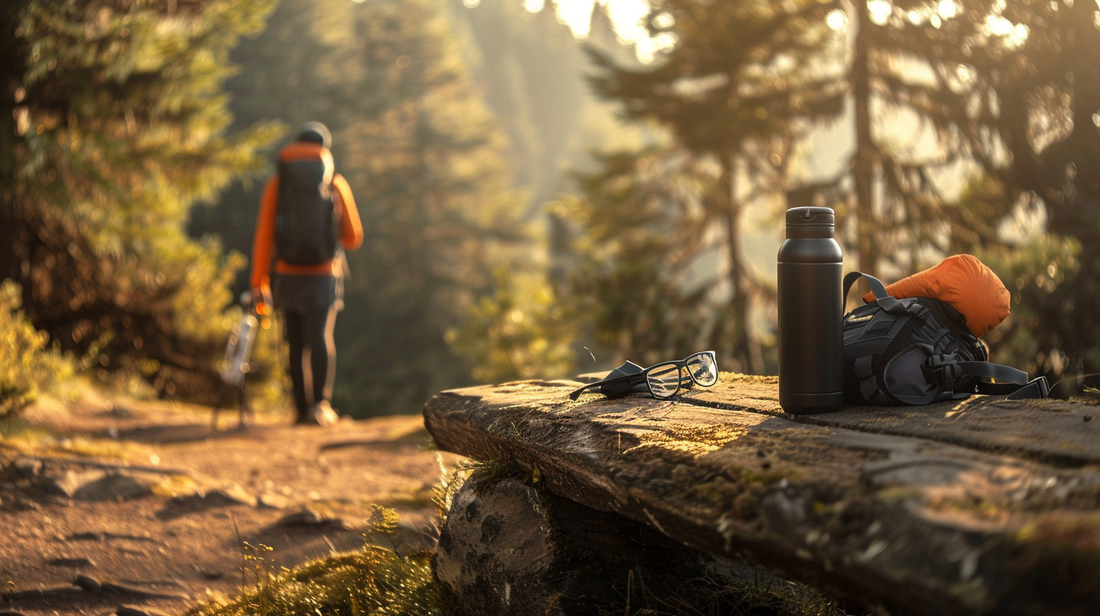
What do you take on a day hike?
A day hike is the perfect way to escape the hustle and bustle and recharge in nature. Whether you're taking a short walk in the Ardennes or planning a challenging climb in the Alps, proper preparation is essential. The right equipment not only increases your comfort but also your safety. This checklist lists the most important items for you, so you're always well-prepared.
Hiking boots suitable for the terrain
Good footwear is essential for any hike. Make sure you wear sturdy, broken-in hiking boots or trail shoes suitable for the terrain. For flat trails, a lightweight shoe with a flexible sole is sufficient, but if you're climbing or hiking on rocky terrain, choose a model with more support and grip.
Dress in layers
The weather can change quickly, especially in hilly or mountainous areas. Therefore, dress according to the layering system: a breathable base layer, an insulating mid-layer, and a windproof or waterproof outer layer. Don't forget a buff, cap, or beanie, depending on the season.
Backpack (20-30 liters)
For a day hike, a 20- to 30-liter backpack is usually sufficient. Choose a model with a hip and chest strap to ensure even weight distribution. Make sure your pack has room for your food, drinks, a raincoat, a first aid kit, and perhaps an extra sweater.
Sufficient water
Hydration is a crucial, yet often overlooked, part of your hike. Bring plenty of water—at least 1.5 to 2 liters—and distribute it wisely throughout your hike. This can be done with a standard water bottle, but also with a hydration bladder that allows you to drink along the way without stopping.
Many hikers choose a combination, for example, a 1.5L CamelBak hydration bladder as a base and a lightweight 0.6L or 0.75L water bottle as an extra. This way, you always have a backup and can vary your options with sports drinks or electrolytes, for example.
Want to travel compactly? Then the flexible CamelBak 0.5L water bottle is an ideal solution: lightweight, collapsible, and easy to refill on the go.
Food and snacks
Pack energy-dense snacks that you can easily eat while hiking, such as nuts, energy bars, bananas, or dried fruit. For longer hikes, a compact lunch (like a wrap or sandwich) is a good addition. Also, pack some salty snacks if you're sweating a lot.
Navigation
Even on marked routes, it's wise to have a map, compass , or GPS app handy. A phone with sufficient battery is often sufficient, but a charged power bank and perhaps a paper map are also essential.
First aid and safety
A compact first aid kit , sunscreen, a whistle, and possibly a rescue blanket are essential in your backpack. Don't forget your ID and some cash.
Going out alone? Let someone know where you are and when you're expected back.
Extras for comfort
Depending on your route and the weather conditions, hiking poles , a quick-drying towel , sunglasses, or a lightweight seat mat can make your hike a little more comfortable. Also, remember to bring a garbage bag for your rubbish – leave no trace!
In short: prepared for the road
A day hike doesn't require a packed pack, but it does require smart choices. With the right shoes, layers, enough water, energy, and basic supplies, you're ready for any adventure. Whether you choose a classic water bottle or a complete hydration system, make sure you can always drink easily and regularly – especially during strenuous activities or in warm temperatures.
